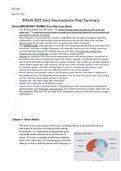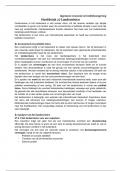Summary
Neuroscience Preparation Summary | Brain Bee
- Course
- Neuroscience
- Institution
- Neuroscience
The following is the SUMMARY of all the topics you need to know for your Neuroscience preparation exam or competition. There are various topics discussed throughout it that range from the "Brain basics to Drugs and Addictions, Movement, Learning, Memory" and just SO MUCH MORE... Furthermore, the in...
[Show more]




